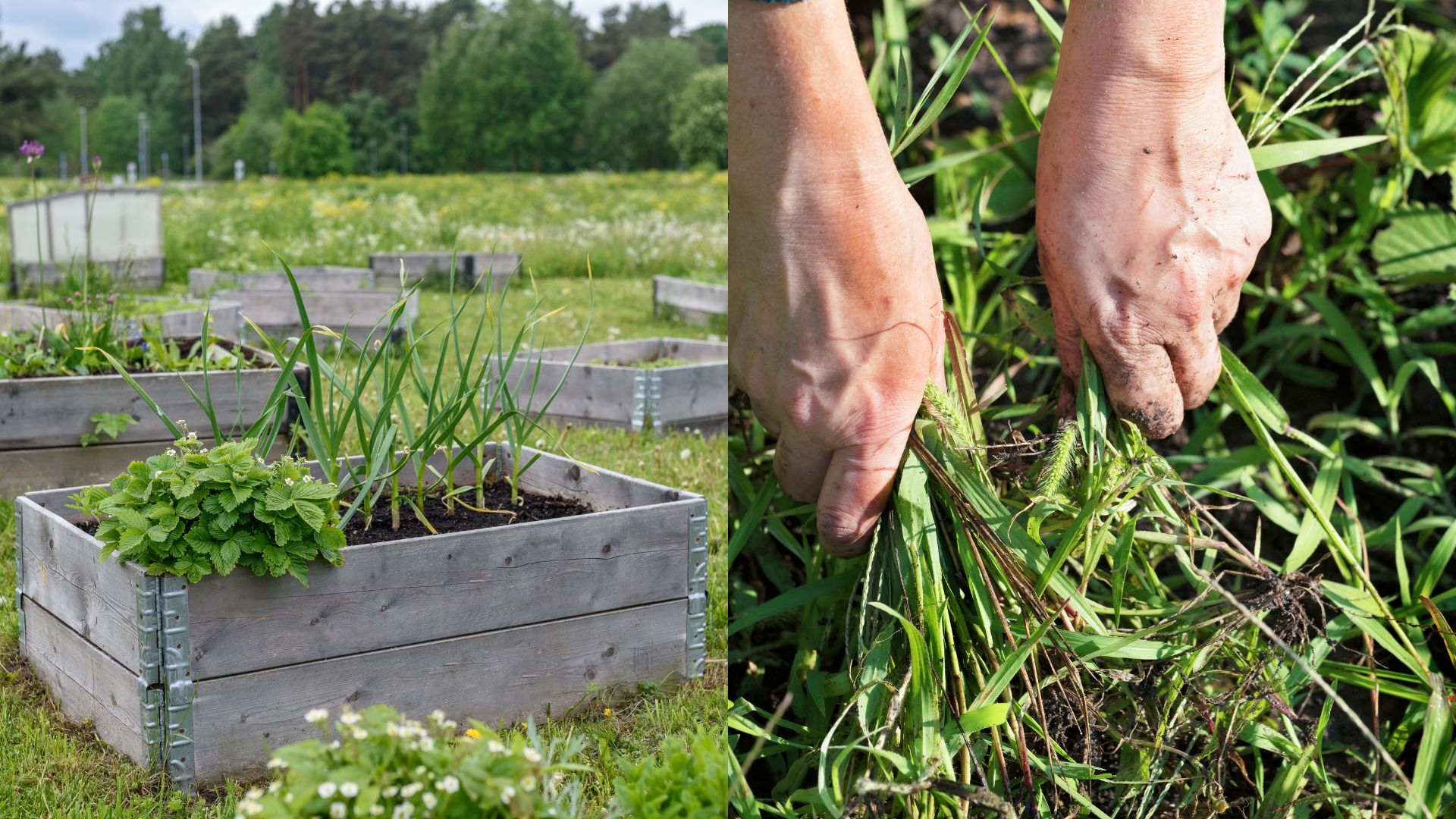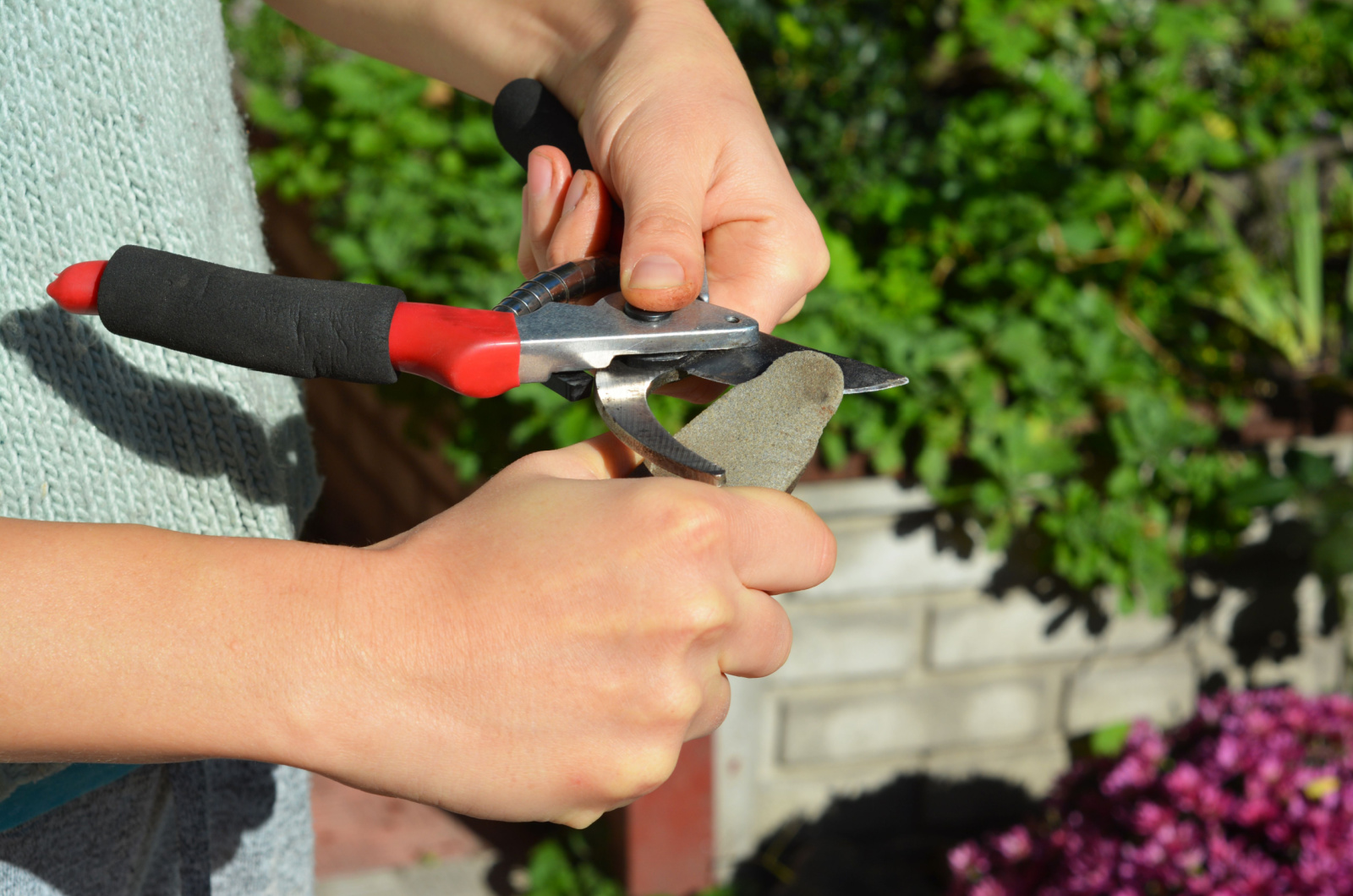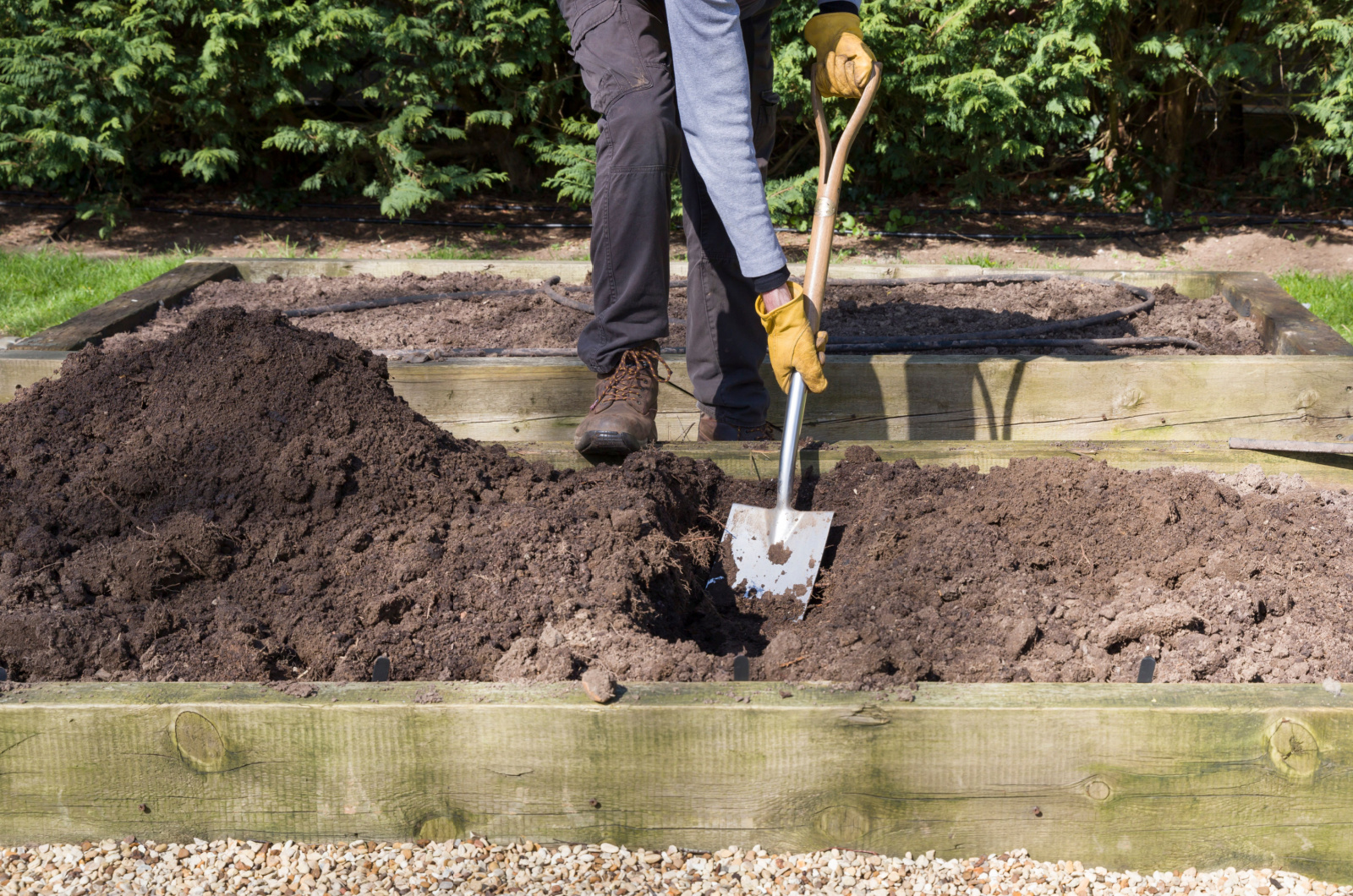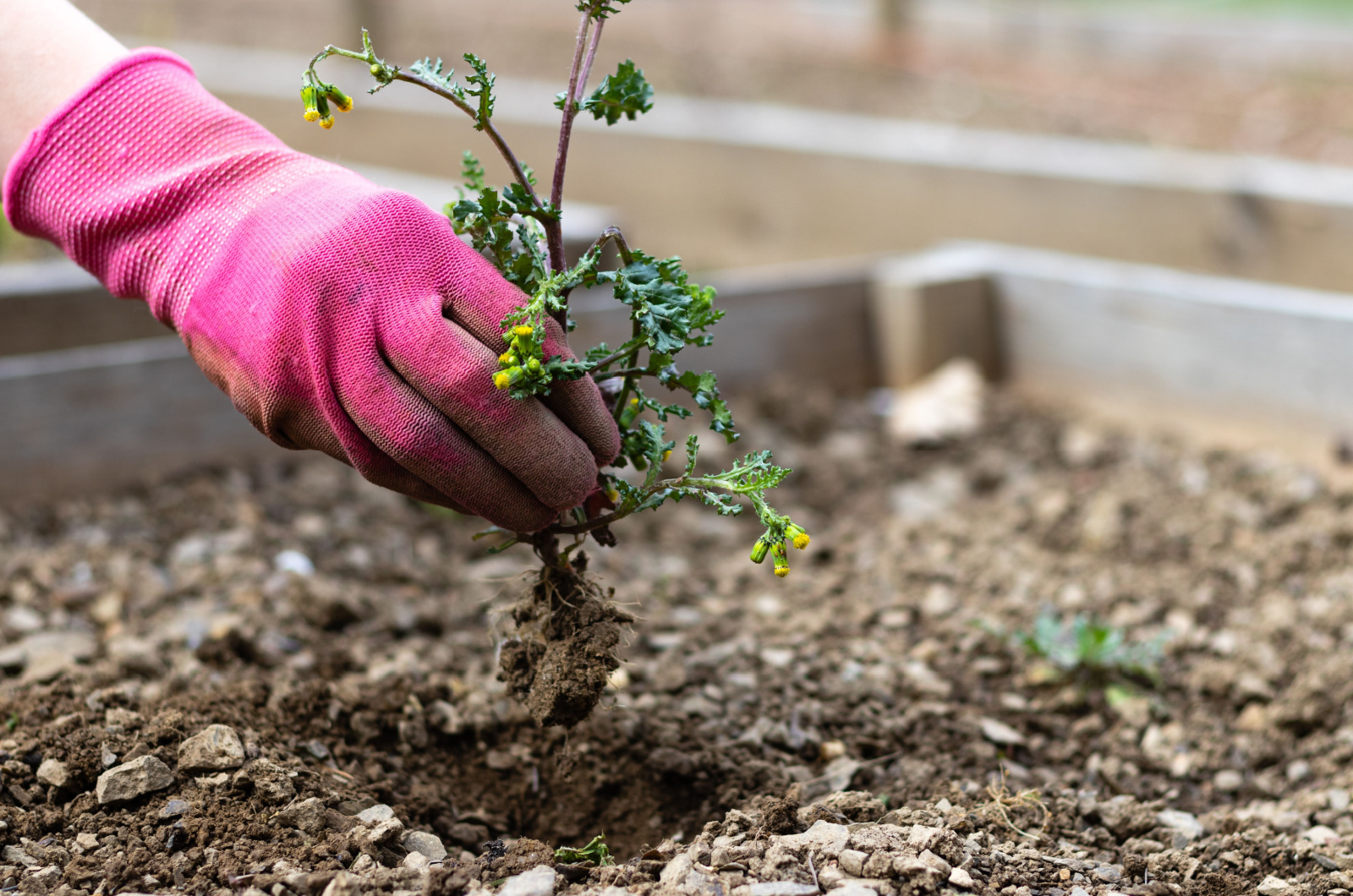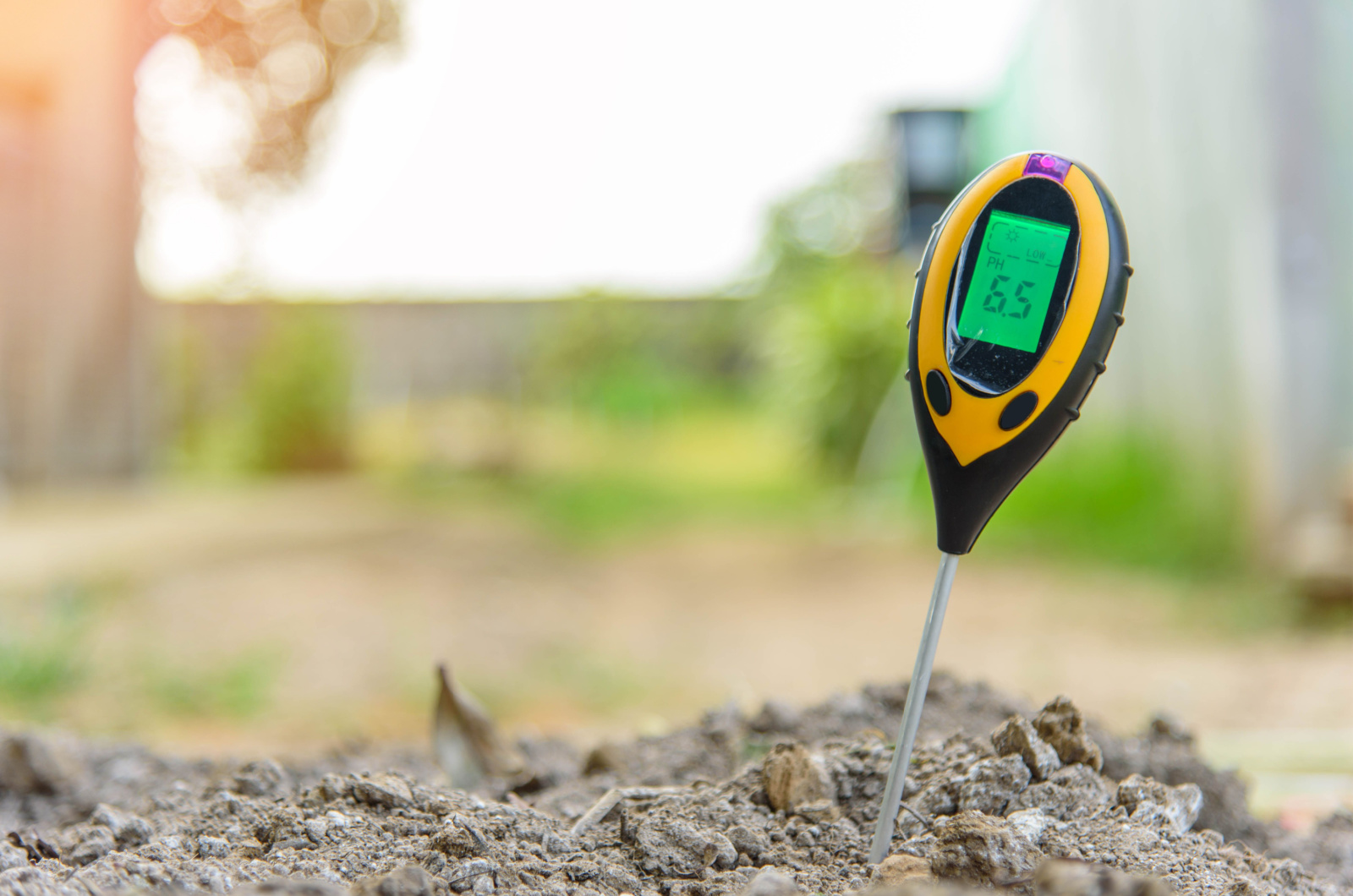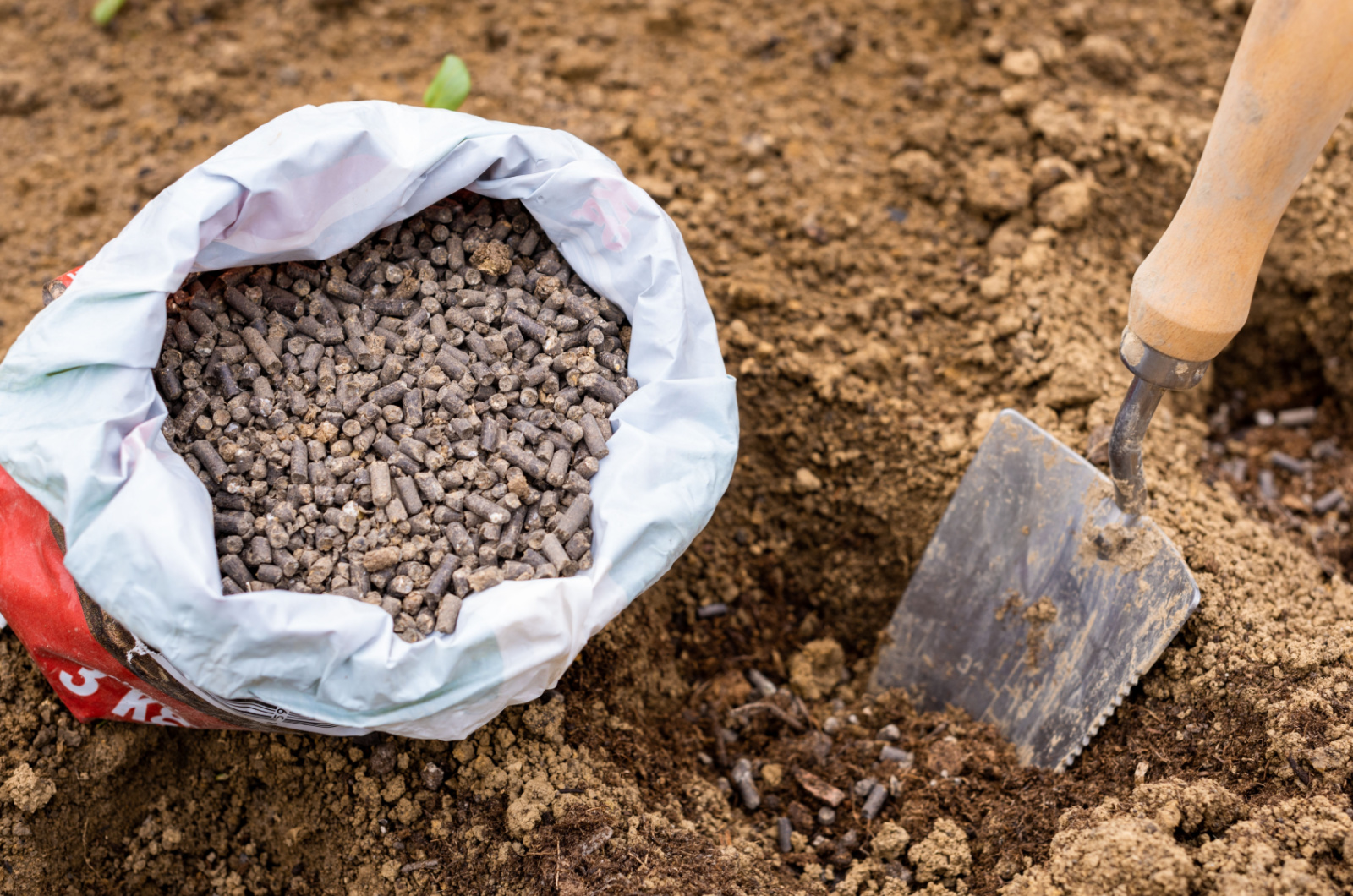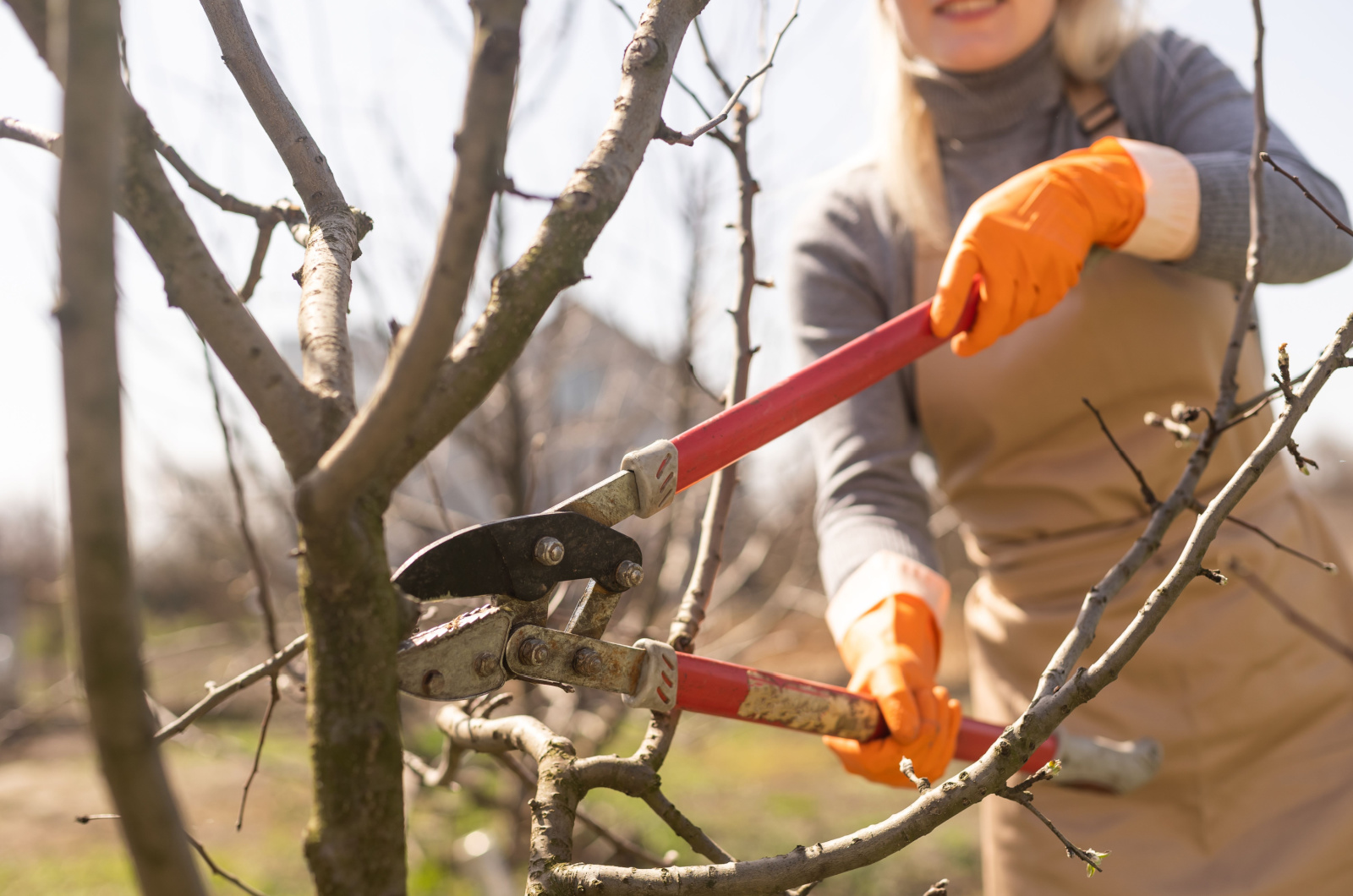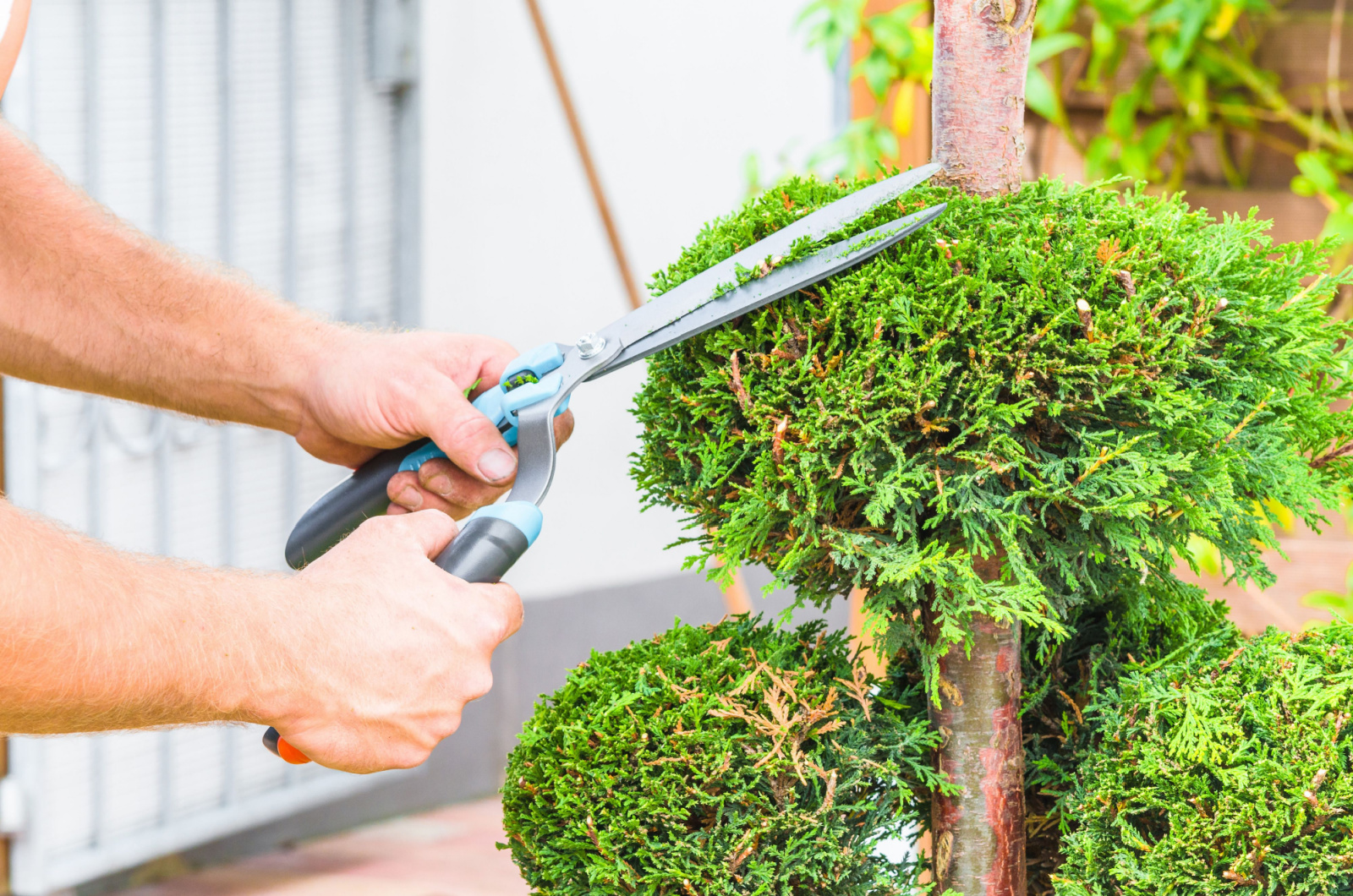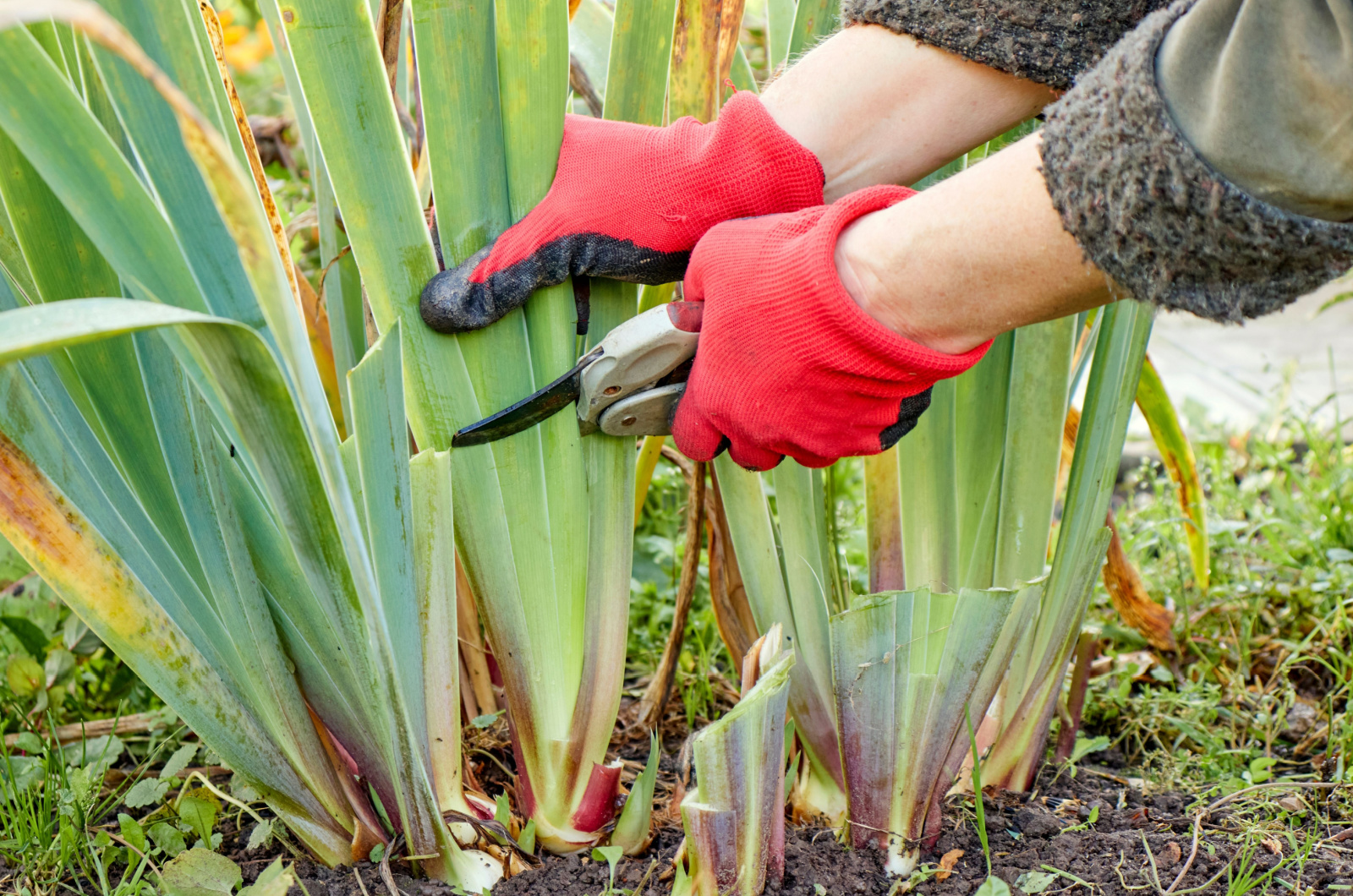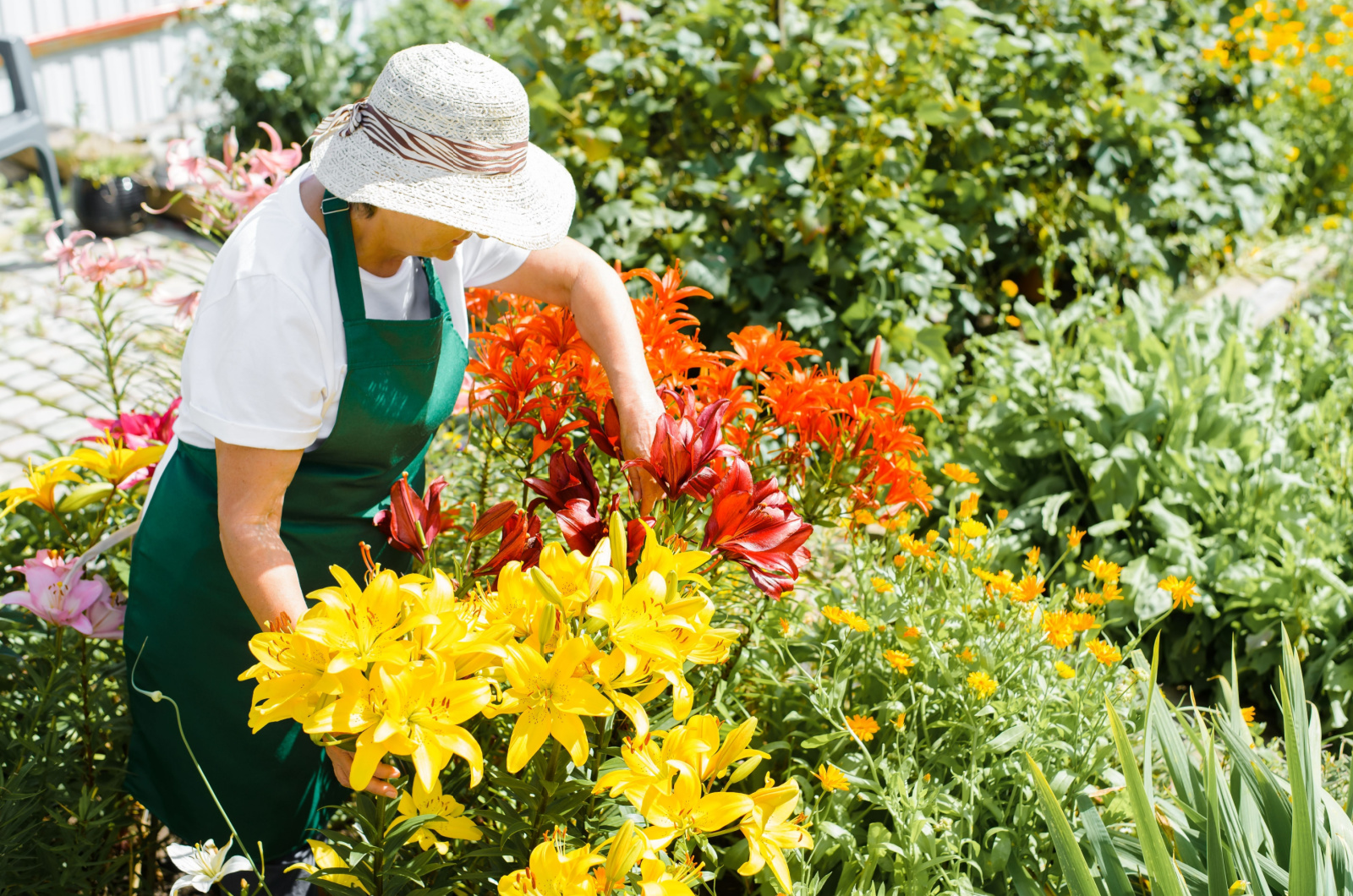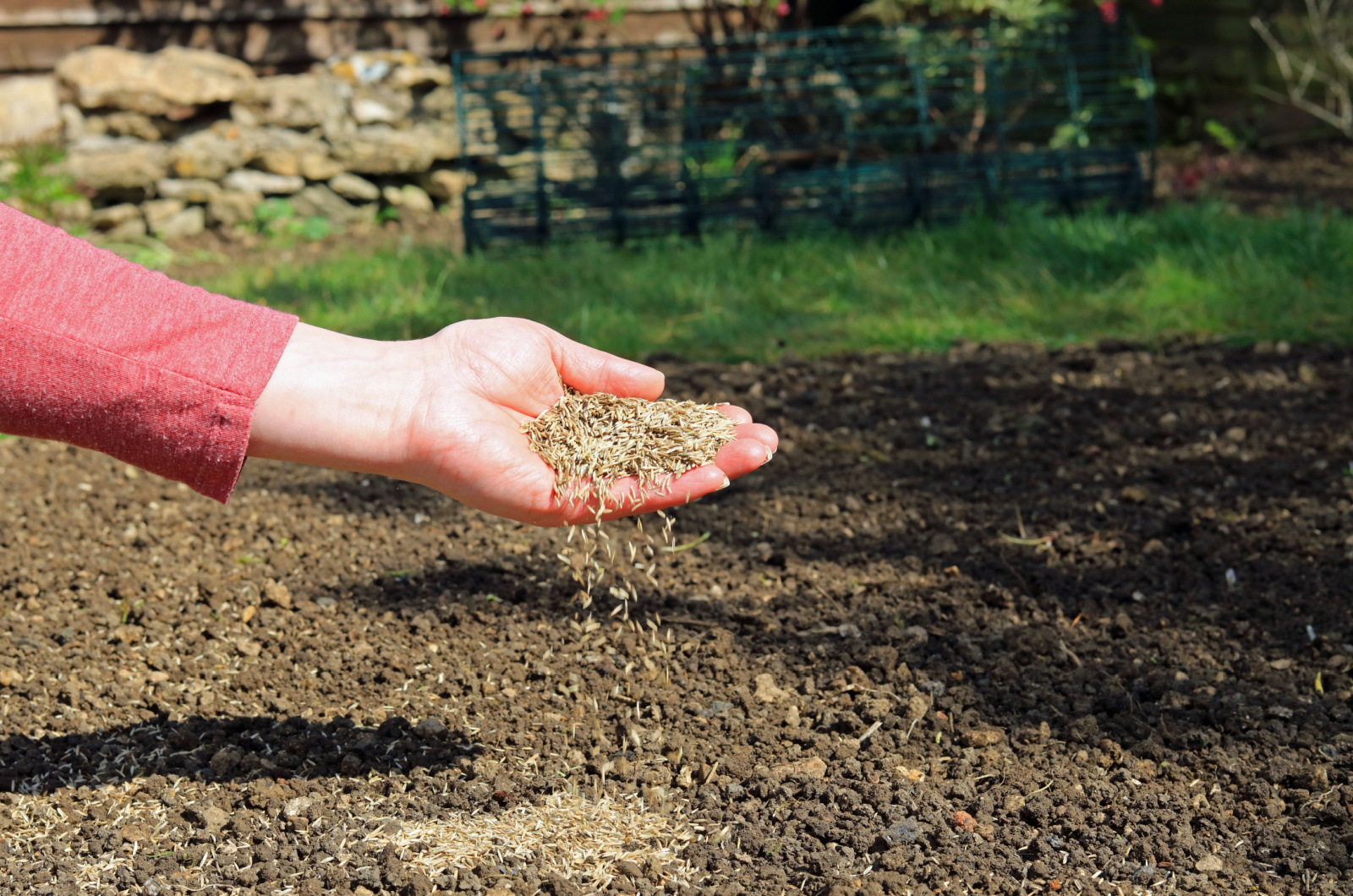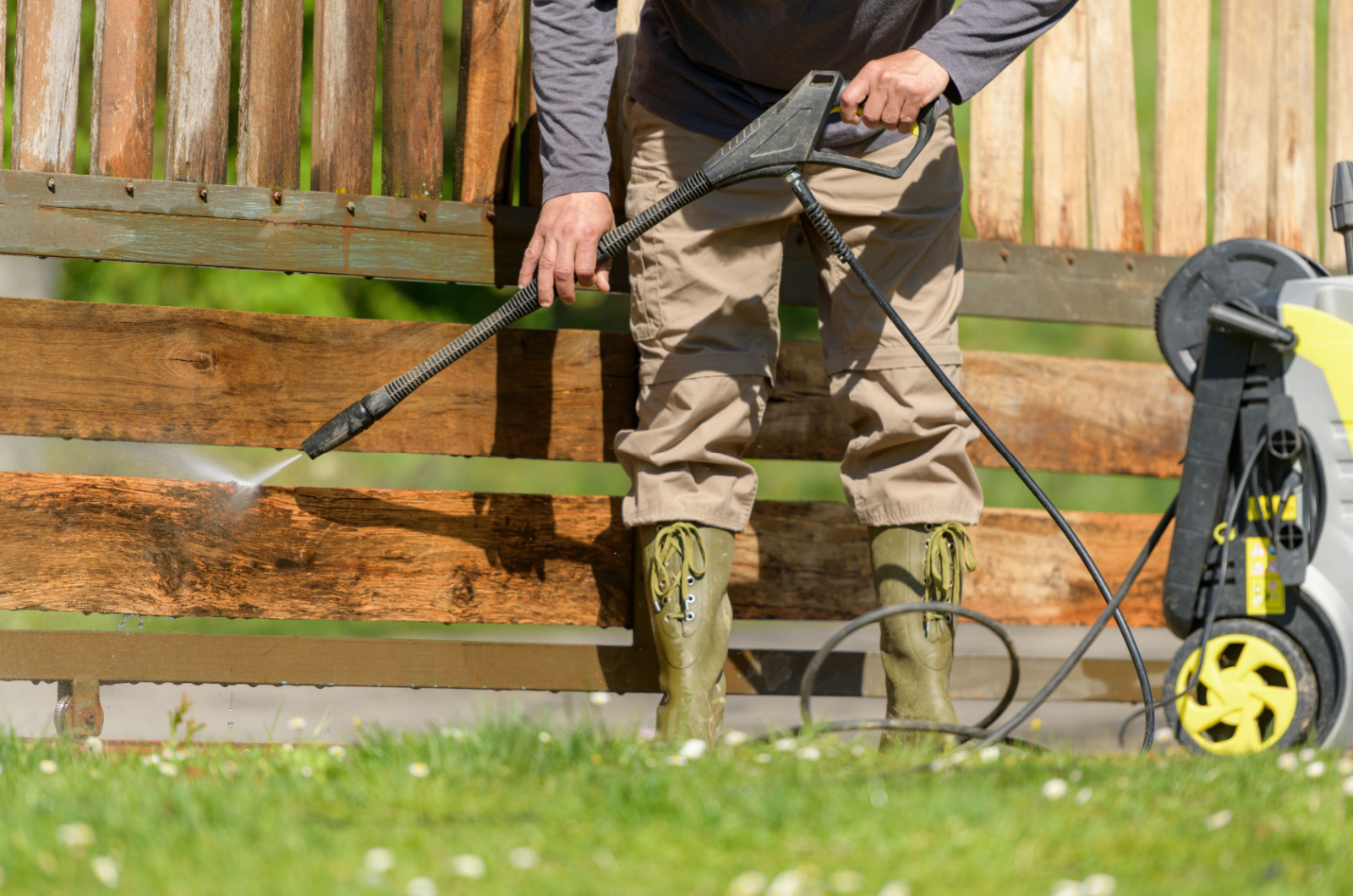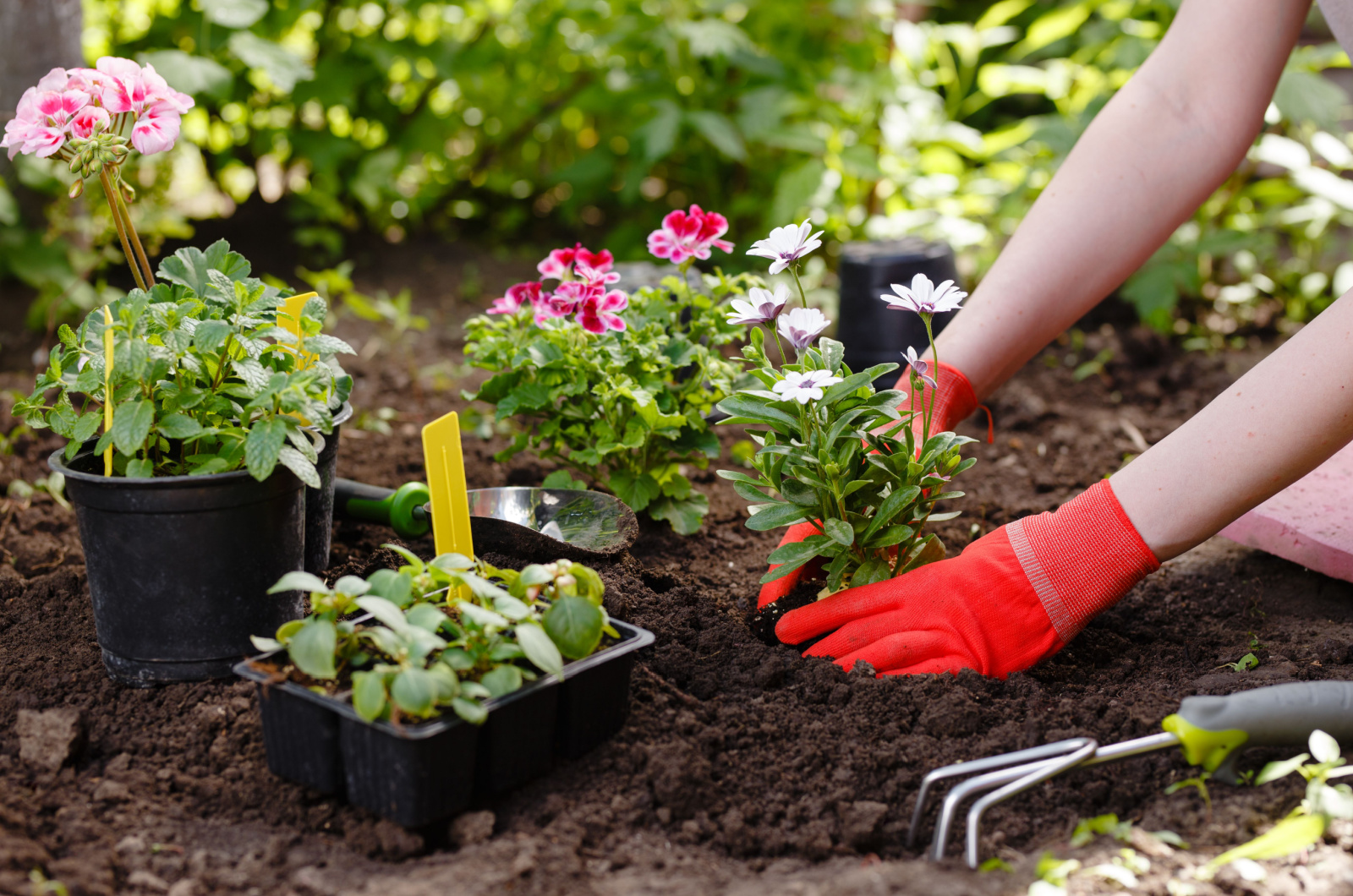It’s not even winter and I’m already thinking about all the spring chores I’ll have to do. But that’s good because there are a lot of them.
The thing about spring planting is that you should prepare your garden in advance. Soil and garden bed preparation, pruning, and lawn care are all essential parts of this.
It’s a lot, I know. Yet, if you start on time, you won’t have any issues. Here are the ten jobs I always do in fall or winter.
Let’s get started!
#1 Prepare To Prepare
No, I don’t mean preparing yourself mentally to do all the work that’s been piling up. (Although, that’s not a bad idea!)
I’m talking about cleaning the tools. Of course, we remove plant material and soil before storing them. But there’s another thing you should do.
Sterilize your shovels, loppers, and pruners. They can contain plant debris, sap, or soil borne pathogens.
If you use infected tools on your plants, you will transfer fungi and bacteria onto your healthy plants.
Soak the tools for about half an hour in a water-bleach solution (90% water, 10% bleach). Rinse them afterwards and put them away. Or you can spray them with rubbing alcohol if you don’t have time to wait.
Remember to rinse your tools after sterilizing them. Bleach and alcohol can cause corrosion. Coating them with oil helps. But if you already have rusted tools, here’s how to remove it:
Pro tip: Sterilize the tools between changing plants. It will prevent disease transfer!
This is also a great time to sharpen your equipment. Pruners, loppers, mowers, and even shovels benefit from it.
Speaking of mowers, remember to change the gasoline. Check the carburetor and service your entire mower. It will save you a lot of trouble once your lawn resumes its growth.
Finally, don’t forget about your greenhouse. Clean it before you add any plants. Sweep the old soil, empty the shelves, remove plant debris, and wash clear surfaces so that the light can find its way in.
And once the tools are ready, we can get to the “real” work!
#2 Get Garden Beds Ready
Late winter is the ideal time to prepare your garden beds for planting. One thing I always do is rejuvenate the raised bed soil.
Remember to reduce compaction and get rid of any weeds. You can do this 14-20 days before planting.
Pro tip: Mulch your beds with green manure or compost in fall if you’re using the no-till method. It will enrich the soil with nutrients in time for spring planting.
#3 Manage Weeds And Pests
Weeds are some of the first things that grow in my garden. Luckily, there are great ways to keep weeds away from flower beds. Mulching and planting ground covers are my favorite ways.
If they still appear, take them out before they go to seed and spread. My favorite method is pulling them out by hand. You can use herbicides if you find this to be too much work.
And don’t forget about pests. They can overwinter in soil and old leaves. Check everything before planting because caterpillars and cutworms can wreak havoc on your seedlings
(Better to feed them to your chickens!)
#4 Check The Soil
Incorporating cover crops into the substrate is a great way to start improving your garden soil. But, there are other soil things you should bear in mind.
Check the soil pH value in late winter or early spring to see whether it has changed. You can test it yourself or send it to an Ag Lab.
The next step is to loosen the growing medium. The easiest way is to incorporate compost. It will aerate the soil and prevent compaction. Perlite, pumice, and similar amendments can also help you.
And don’t forget about raised beds. I mentioned soil rejuvenation, but there are other things you can do. You might need to top them off with more substrate.
It is unlikely that you’ll have to do this in the first year. But in time, the ground level will lower and you’ll have to add more material to raise it. Use weed- and disease-free topsoil.
#5 Fertilize And Mulch
It is important to feed your fall garden because plants deplete the soil of nutrients. If you do it in fall, you’ll have a lot less on your plate come spring.
Send your substrate to analysis or use soil kits available online. They will tell you whether your substrate needs more nitrogen, potassium, or some other nutrient.
Let the plants you plan on planting be your guide. Tomatoes, peppers, and eggplants need calcium to prevent blossom end rot. Flowers benefit from extra phosphorus once their blooming season approaches.
You can also feed your soil a couple of weeks before planting. Use quick-release organic plant food at that time. If you want to feed your soil in fall, stick to slow-release plant food.
It’s also a good idea to mulch your garden, especially if you’ll be growing plants from transplants. Mulch will prevent weeds from emerging and make your life a lot easier.
Yet, if you plan on sowing seeds directly in your garden, you might not want to add mulch. You will have to remove it before planting, after all.
Instead, use landscaping fabric. It will prevent weed growth and is easy to remove.
#6 Maintain Trees And Shrubs
Trees and shrubs need a good deal of maintenance before spring is in full bloom. The first thing you should do is prune them. Many gardeners do this in late winter.
Their dormant state will prevent trees and shrubs from putting on new growth. And there won’t be any buds you can accidentally trim and reduce your harvest or flower exhibition.
First start with dead, damaged, or diseased limbs. Once you get rid of those, move onto all branches that cross. Finally, open up the centers of your trees and shrubs. There are quite a few mistakes to avoid when pruning trees and shrubs, so be careful.
As the weather warms up, remove all frost covers. Trees and shrubs are hardy and the frost won’t damage them that easily.
It’s also a good idea to use dormant oils on your trees before buds break. They will deal with pest infestations without damaging the foliage.
Do you have supports around the trees you planted last year? If you do, consider removing them. The trees will need less support and more room to grow as they develop.
And if you’ve used wires to keep them from breaking in the wind, loosen them up. Trees will grow around them and they will be a nuisance to remove afterwards. You can also spread out the stakes you have so your trees have more space.
Finally, a word about mulching. If you’ve used a thick layer to protect your young trees and shrubs in winter, remove most of it. Or you can replenish aesthetic mulch (wood chips, gravel) if the winds and rain moved it around.
#7 Care For Perennials
Your perennial flowers and bushes need some TLC towards the end of winter or the beginning of spring. That’s the perfect time to give them a nice prune if you didn’t do it in fall.
The key is to trim your perennials just before the new growth appears. If there are already buds on branches, wait until fall.
Trim your plants down to about 2 inches from the ground. And if you have ornamental grasses, prune them to about a fifth of their entire size.
Late winter or early spring are the perfect times to remove the thick mulch from these plants. It can harbor pests and leave the soil too moist for your plants. The safest thing you can do is dispose of it. Yet, some gardeners add it to their hot composts as well.
Early spring is the perfect time to divide your fall bloomers. It will freshen them up and keep them healthy. Not to mention giving you more plants you can grow or give to your loved ones.
And don’t forget about transplanting shrubs or other perennials. Uproot your plants and move them to their new location. Do this in late winter or early spring, and your plants will be less likely to suffer from severe transplant shock.
Yet, you should prepare the holes in advance. I do it in fall. Dig the holes, amend them with compost, and even add some fertilizer. It will replenish the soil and give your newly transplanted perennials a great start.
#8 Don’t Forget About Your Lawn
Weeds are one of the first plants that emerge when warm weather arrives. That’s why you should act quickly and remove crabgrass, dandelions, and other lawn nuisances. Wait too long, and they will establish in your grasses, becoming a long-term issue.
Weeding leads to another problem – bare patches. Luckily, you can cover them up. Spring is the best time to sow grass seeds and overseed your lawn.
Another spring chore is aeration. It reduces compaction and makes the soil more breathable. Aeration also allows compost and fertilizers to get directly to the grass roots.
This reduces fertilizer run off. That way, there’s no fear for your underground waters and other parts of your garden. And don’t add too much fertilizer because it increases the risk of run off.
Dethatching is another chore you can do in early spring. Remove all plant debris, clippings, and twigs so that your grasses can grow straight from the soil.
And don’t forget to clean your drainage trenches of old leaves and plant material. This allows you to remove overwintered pests and prevent moisture pockets.
#9 Do Some General Yard Jobs
Spring is the perfect time for some general work you couldn’t do in winter. That includes checking your irrigation setups for leaks, spray distribution, etc. Replace damaged hoses and start regular maintenance.
Late winter and early spring are ideal for starting your own compost pile, building potting benches, etc.
Replace or replenish your old mulch near walkways when the weather warms up. It will suppress weeds and make your yard more appealing.
And repair any fences that snow and winds have damaged. Replace or fasten broken or loose boards. The soil is soft and workable in spring, so you can build a whole new fence if you wish.
Finally, don’t let vines envelop your home. Remove them in spring before they take over your entire yard.
#10 Start Planting
Spring garden prep comes down to one thing and one thing only – planting. Find flowers and veggies that are suitable for your USDA zone and get your hands dirty.
You can start your seeds indoors in winter and get a jump start on your season. And once the weather warms up and the seedlings develop, you can move them outdoors.
Of course, you should always wait until all danger of frost has passed before transplanting seedlings. In fact, some of the most common planting mistakes are not planning and planting too early.
You can start planning your spring beds and plots right now. Research all the plants you want to grow. Lettuce, spinach, leeks, and peas make for great spring vegetables.
And don’t forget about fruit trees. Late winter is ideal for planting nectarines, peaches, and plums. Currants, vines, and even asparagus are also suitable for spring planting.
Of course, fruits and vegetables aren’t the only things in our gardens. Flowers are crucial as well. Plant your summer-blooming bulbs in early spring and enjoy. Dahlias, gladiolus, and other varieties are perfect for this.
Final Thoughts
These chores don’t seem to have an end. But do them for a couple of years and they will become second nature to you.
The steps you take now and later in winter will make your garden thrive during the warmer seasons. Bear this in mind once you get outside and start shoveling, clipping, and mowing.

